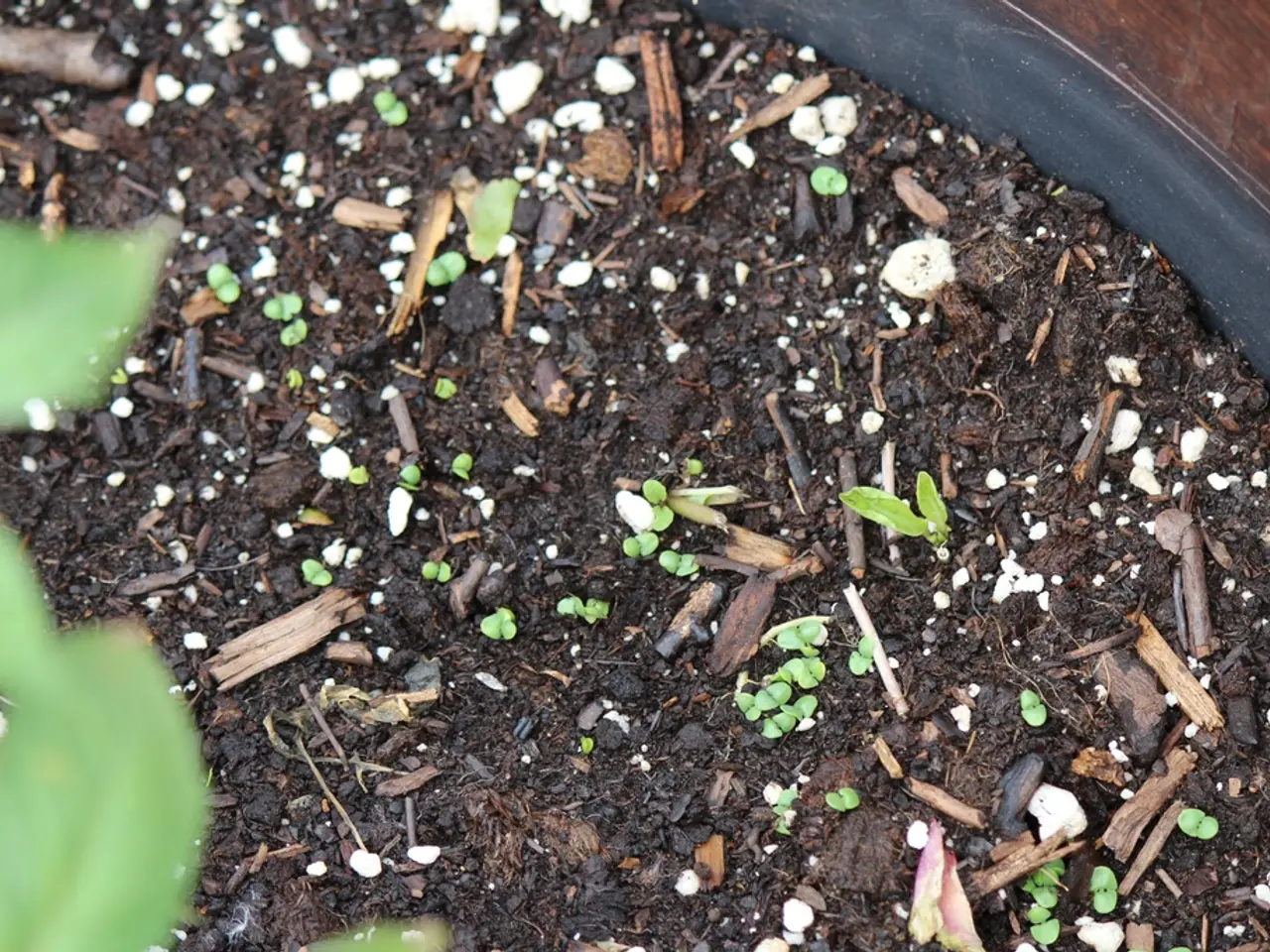The intricate nature of the Earth's surface: there's more to the ground beneath your feet than meets the eye.
Embracing the Biological Approach to Soil Fertilization
A new approach to soil fertilization is gaining traction among gardeners and farmers alike – the biological approach. This method focuses on using living organisms to enhance soil health and nutrient availability for plants.
The biological approach involves the use of mycorrhizal fungi, nitrogen-fixing bacteria, and plant growth-promoting rhizobacteria (PGPR) to improve soil health and nutrient cycling. These biologicals work by converting nutrients unavailable to plants into usable forms, extending root access to nutrients, and increasing soil organic matter and structure through substances like glomalin. They also suppress soil-borne diseases and boost plant resilience to environmental stresses like drought and heat.
Compared to using synthetic (chemical) nutrients, the biological approach has several distinct advantages:
- Soil Health: The biological approach restores the microbial balance in soil, increases organic matter, improves structure, and enhances moisture retention. Synthetic fertilizers, on the other hand, can degrade soil health over time, cause acidification, and lead to nutrient imbalances.
- Nutrient Cycling: Biological fertilization enhances natural nutrient cycling and nutrient availability, whereas synthetic fertilizers provide immediate nutrients but may reduce microbial activity and long-term fertility.
- Plant Growth: Biological fertilization increases crop yields by 20–28%, promotes root growth, and enhances stress resilience. Synthetic fertilizers may provide short-term yield increases, but long-term yields may decline without maintaining soil health.
- Disease Suppression: Biological methods suppress pathogens by beneficial microbes, reducing root diseases. Synthetic fertilizers control pests chemically but may have harmful side effects.
- Environmental Impact: Biological fertilization reduces greenhouse gas emissions by about 50%, promotes sustainability. Synthetic fertilizers increase greenhouse gases by about 20%, making them less environmentally sustainable.
- Water Retention & Drought Resilience: Biological fertilization improves water retention by approximately 23%, helping plants adapt to drought stress. Synthetic fertilizers slightly decrease water retention and resilience.
By adopting this biological approach, we can build a more resilient, fertile, and sustainable soil ecosystem that supports healthier, higher-yielding plants over the long term. Synthetic nutrients can provide quick boosts in nutrient supply but often at the cost of soil microbial health and sustainability.
In addition to this, there are practical steps gardeners can take to support the biological approach:
- Keeping the most finely decomposed compost for plots where vegetables are grown can increase soil life.
- Soil organisms, such as fungi, bacteria, nematodes, worms, beetles, etc., have the ability to give a healthy structure to soil and make nutrients available to plant roots.
- Earthworms make casts up to 50% higher in organic matter than surrounding soil, and their digestive enzymes make nutrients more available to plants.
- Not digging soil leads to a more healthy soil population and more vibrant plants.
Moreover, biological methods complement technologies like biochar amendments, which improve soil structure and nutrient retention and further promote plant growth and stress resistance as part of an integrated soil fertility strategy. Emerging agricultural innovations include using microbial inoculants and precision tools to maximize these biological benefits efficiently.
In conclusion, the biological approach to soil fertilization promotes plant growth by enhancing the natural soil ecosystem, improving nutrient cycling, and increasing stress resilience, generally outperforming synthetic fertilizers in sustainability, soil health, and long-term productivity.
- The biological approach, applied in home-and-garden settings, can promote a healthier lifestyle by creating thriving gardens filled with vibrant plants, due to its focus on using living organisms to nurture soil health and nutrient availability.
- Implementing this method could lead to the transformation of one's landscape, as earthworms, fungi, and other beneficial organisms work together to give soil a healthy structure and make nutrients readily available for plants, ultimately enhancing the overall aesthetic appeal of a home-and-garden.
- By incorporating gardening practices that support the biological approach, individuals can create a harmonious living space symbiotic with nature, promoting sustainability, reducing environmental impact, and simultaneously improving their gardens' long-term productivity.




